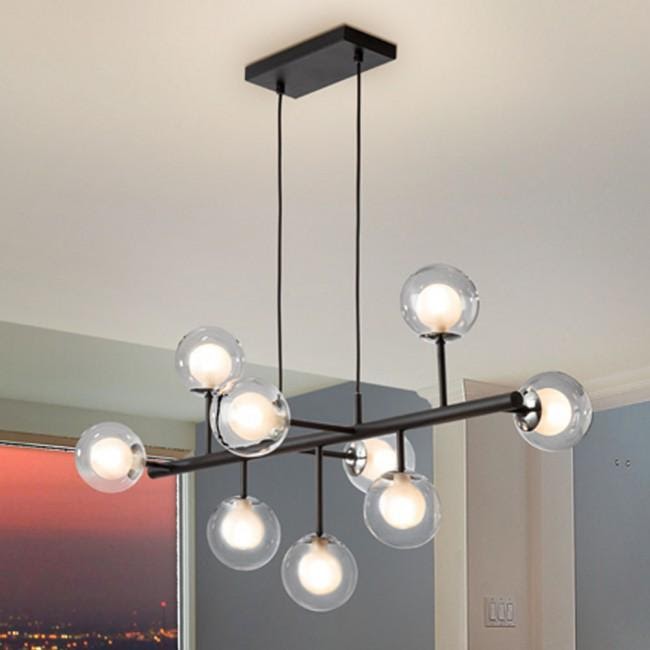Just like the size and layout, lighting is a determining factor in the comfort in a home, and lights are essential accessories in this area today. However, it is not always easy to choose these lighting accessories when considering the room to accommodate them, the layout and dimensions of the furniture or the type of atmosphere desired. Notwithstanding, some lights are more useful than others depending on the rooms intended for their reception. Here are our tips for making the right choice.
What lights are installed in your living room?
Central part of the interior, the living room must present an intimate, warm and soothing atmosphere. Since it is a multifunction room (reading, relaxation, etc.), we will try to have different atmospheres in several light points. In general, the recommended ambient light intensity is 200 lux with places at 50 lux for a subdued atmosphere. We will then opt for a reading lamp as main lighting. Equipped with a dimmer, it can be oriented towards the wall or the ceiling to bring a non-glare light to the room.
In addition, accent lamps like you can find at multi lighting will be ideal for reading comfortably on your sofa while a pendant lamp above the living room table will be useful for moments of family discussions. Finally, don’t forget to highlight the paintings and decorative objects in the room with small spotlights.
What lighting does a dining room use?
Dining rooms require powerful lighting between 600 and 300 lux for meal times. To have this light intensity, a suspension (decorative) or a ceiling light (less bulky) will be recommended. The luminaire should be placed at a suitable dimension (approximately 70 cm) to the dining table for optimal lighting. If the room is large, feel free to add wall lights or table lamps to nearby furniture to discreetly light up the background.
What lighting for the bedroom?
In a house, the bedroom is used much more for rest than for reading or studying. As such, it is necessary to bet on felted atmospheres and a very little aggressive lighting. For an adult bedroom, a ceiling light will provide general lighting of around 100 lux while wall sconces, reading lights or bedside lamps will provide decorative accent lighting (250 lux) near the dressing room or for the reading area. To make the room more practical and comfortable, do not hesitate to have a lighting control system from the bed.
For children’s rooms, lighting is needed down to the floor (300 lux), via a spotlight on the wall or a powerful floor lamp. You can opt for light garlands or wall lights to bring a calm and soft atmosphere to the room.
Lighting suitable for the kitchen
As with dining room tastings, kitchen preparations require powerful light, particularly on the worktop (450 lux). At this level, spotlights placed under the wall units will provide functional lighting, while a ceiling light, an extra-flat LED panel or a suspension will serve as general lighting for the room (300 lux). In addition, the dining area can be illuminated via rows of spotlights, while LEDs highlight the contents of your display cases.
How to choose your bathroom fixtures?
In your bathroom, it is desirable to have direct lighting in order to prepare yourself for the day. It starts with a main light at 300 lux provided by a ceiling light specifically dedicated to this room or recessed spotlights. Then think about installing directional spotlights, wall lights or lamps on each side of the mirror to refine the lighting to 500 lux.
The safety of the installations is the main issue in a bathroom . At first glance, the electrical installations must not be near water sources and it is always necessary to take luminaires with the correct IP (Protection Index). In addition, we must avoid placing the appliques above the mirror, but rather on both sides, so as not to create shadows on the face. At best, opt for lighted mirrors for more comfort.
Luminaires for office lighting
In a house, the office is a working room in its own right. Its lighting must therefore have as little shadow as possible. To have it, we will think of a suspension for the main light (300 lux), and desk lamps for accentuated lighting (500 lux) on the work area.

